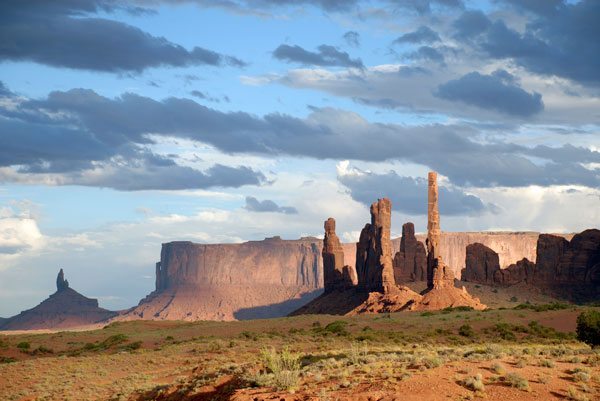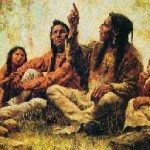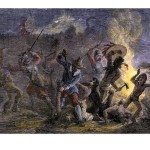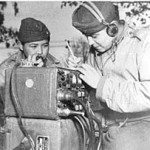“History, Rights, Joint Use, HPL”
Provided by the Hopi Tribe
All of the land within today’s northeastern Arizona was once a part of the Hopi tutsqua, the ancestral and sacred homeland of the Hopi. It is estimated the tutsqua covers over 18 million acres.
Hopi villages symbolize the stronghold of the tutsqua, but they by no means constitute the entirety of this territory. The villages are linked with an extensive network of ancestral sites such as Chaco Canyon, Mesa Verde, Aztec, Spur Cross, Wupatki, Canyon De Chelly, and Betatakin. Each ancestral site holds the markings and stories of Hopi clans (known as petroglyphs), ancestral burials, shrines, medicinal gathering places, ancient farming lands, and the habitat of animals for which many Hopi clans are named. Although most of these places now lie outside the Hopi Reservation, they nevertheless continue to hold the highest religious, cultural, historical, and spiritual significance for the Hopi.
The Hopi are bound to the tutsqua not only by a long history, but also by their belief that they entered into a sacred pact with Massau, guardian of this world. As long as the Hopi follow Massau’s teachings and care for the land they are allowed to remain in their tutsqua. Hence land is intricately interwoven with Hopi religion, culture and daily life. To the Hopi, taking away the land for which they serve as stewards is tantamount to the destruction of the Hopi themselves. This is the only place for Hopi people; it is their place of emergence into this world as a people and culture, where the katsina spirits live, and where their religious obligations must be carried out. The Hopi are bound to these lands forever.
In the Beginning
Hopi people are direct descendants of Hisatsinom, or San Juan Anasazi Basketmakers, who once occupied the now-ruined pueblos of the Southwest. Archaeological evidence documents continual Hopi occupancy of the area since 500 C.E., giving Hopi people the longest authenticated history of occupation of a single area by any Native American tribe in the United States. While ancestral Hopi located their villages on mesas for defensive purposes, this did not mean that village life was restricted to the mesa tops. Land surrounding the mesas was divided between clans and families while certain areas were held in common for medicinal and religious purposes. The Hopi established boundary markings hundreds of miles away from their villages to demarcate their ancestral homeland and use area.
Invasions of Hopi Land Begin
The first incursion on Hopi land occurred shortly after Spanish General Francisco de Coronado entered the Rio Grande Valley. In 1541 Coronado dispatched an expedition under the leadership of Don Pedro de Tovar to explore the west. The expedition reached Hopi land and claimed the area for Spain.
Coronado’s journals state that at this time the Hopi were the only people occupying the area. Historical Spanish documents record Navajos as first appearing in the Gobernador, New Mexico area in the late 1500’s. The Navajos, a branch of Athabascan people from the north, had begun their move into the Southwest.
The acquisition of horses allowed the Navajo to become increasingly aggressive. With growing regularity they started raiding and harassing Spanish settlements and Pueblo villages lying west of the Rio Grande River. As the Spanish population increased along the Rio Grande Valley, the Navajo moved further westward and began encroaching on Hopi land.
The Navajo did not begin moving into Hopi territory until the late 1600’s. Richard O. Clemmer in his book Roads in the Sky: The Hopi Indians in a Century of Change (1995:33) notes that “Spanish documents from 1706, 1775, 1776 and 1781 clearly indicate Navajos living on the Kaibito Plateau but there are neither Spanish documents nor archaeological evidence indicating any Navajos…anywhere near Hopi territory before the 1680 [Pueblo] Revolt.”
As time passed the Navajo population moved further west and by 1740 very few Navajo remained in the Gobernador area. Most had resettled southward towards Big Bead Mesa and into the Cebolleta mountain region, east of Mount Taylor. Consistent with their pastoral and nomadic culture the Navajo distributed themselves throughout the area, grazing sheep and livestock. They moved closer to Hopi villages and established unauthorized homesteads on Hopi land as they came. During this process Navajo appropriated for their own use rangeland, farm fields and water resources, formerly used and depended upon by the Hopi.
As Navajo trespassing continued, the Hopi found themselves in increasing conflict with the Navajo over land. The first recorded conflict between the two tribes took place in 1754, during which the Hopi sent a delegation to Santa Fe to appeal to the territorial governor, Captain General Don Joachin Codallos y Rabel, for assistance. Again in 1757 and 1776 the Hopi pleaded to the Spanish for military protection against the Navajo. However, a lack of troops and fear of the Navajos produced little Spanish assistance for the Hopi. By 1812 harassment from Navajos was a regional problem (experienced by Zuni, Rio Grande Puebloans and Spanish as well), and in both 1818 and 1820 the Hopi again requested Spanish military assistance against the Navajo (Clemmer 1995:33). Anxious to protect their families, the Hopi withdrew to the tops of the mesas for security, leaving their tutsqua largely exposed to further encroachment by the Navajo.
In 1823 Spain recognized Mexican independence and Hopi fell under Mexican jurisdiction. Throughout the Mexican period of occupation “most of the settlers of the southwest were under constant attack by marauding bands of … Navajo…” (Geertz 1994: 119). Although the Mexican military conducted campaigns against the Navajo in 1823, 1833, 1836 and 1838, the Mexican Government’s inability to curtail the raids only encouraged Navajos to increase their harassment.
Hopi Protest to the U.S. Government – Establishment of the 1882 Hopi Indian Reservation
In 1846 the United States and Mexico signed the Treaty of Guadalupe de Hidalgo. This international treaty recognized the rights of the Hopi and their ancestral land area. By signing the treaty the U.S. Government promised to protect the Hopi and their land and soon established a military presence in the area.
Acting Governor Bent, in an 1846 letter to his commanding officer, wrote that the Hopi had formerly been “a numerous tribe in possession of large stocks and herds but have been reduced in numbers and possessions by their more warlike neighbors and enemies the Navajoes…” (Clemmer 1995:35). Between 1850 and 1863 the Hopi repeatedly requested US Government protection of their land rights, economy and culture from the Navajo. Although limited assistance was provided, the Civil War soon occupied the country and American troops were withdrawn from New Mexico Territory in 1861. By 1863 the Americans, tired of Navajo depredations, instructed Colonel Kit Carson to move the Navajo to Bosque de Redondo in New Mexico. However, over 300 Navajos escaped and hid in the Canyon de Chelly and Big Mountain area. From their hideouts Navajo bands continued pillaging Hopi villages and fields. After their experience at Bosque de Redondo, the Navajo signed a peace treaty with the U.S. Government in 1868. The treaty gave the Navajo a 3.5 million acre reservation that straddled the border of northwestern New Mexico and northeastern Arizona. In return the Navajo promised not to leave their area and encroach on Hopi land. However, within a few years Navajos were once again entering Hopi land and creating serious conflict. In desperation a Hopi delegation traveled to Washington D.C. to protest to Congress the Navajo depredations.
It was not until 1882 that President Chester Arthur formally moved to protect the Hopi. Through Executive Order a clearly defined geographic territory was set aside for the use and benefit of Hopi people – the 2.5 million acre Hopi Reservation. However, the haste to establish the Hopi Reservation resulted in the Hopi village of Moenkopi being left outside the reservation boundaries, as well as other highly significant Hopi areas. Yet the Navajo paid no attention to this legally recognized territory. Driven by their extraordinary population growth, large herds of sheep, and the necessity for large land areas to support their lifestyle, the Navajo appropriated most of the 1882 Hopi Reservation in subsequent years. Hopi people were pushed out of the tutsqua into land immediately surrounding their villages. Despite continued Hopi protests to the federal government, the land grab by the Navajo continued unabated and between 1878 and 1934 the Navajo Reservation expanded enormously, sanctioned through Executive Order or Acts of Congress.
In 1934 the Navajo Tribal Council passed a resolution recommending the establishment of grazing districts to prevent overgrazing. In 1937 the Bureau of Indian Affairs accepted the resolution and 15 grazing districts were established within the boundaries of the 1882 Hopi Reservation. The Hopi were restricted to a 650,000-acre unit referred to as District 6, while the Navajo received exclusive use of the other 14 units. However, in transmitting this action to the file the Commissioner of Indian Affairs wrote “It is understood, also, and it should be clearly expressed to the Navajo and Hopi Councils that the delineation of District 6 is not a delineation of boundary for the Hopi Tribe but is exclusively a delineation of land management.”
The Hopi Fight for Their Rights: Healing v. Jones
Once the Navajo moved into Hopi territory, they quickly entrenched themselves on the land and refused to leave. By 1930 an estimated 3,300 Navajo were living within the boundaries of the 1882 Hopi Reservation. The federal government’s lack of political will to protect the Hopi Reservation for the Hopi saw them threatened by complete loss of their lands to the Navajo. Fearful that they would never be able to reclaim or use their tutsqua, the Hopi decided to use the modern court system to help them keep their land. In the 1958 case Healing v. Jones, the Hopi Tribe sued the Navajo Tribe over title to the 1882 Hopi Reservation and argued for the return of all land within the boundaries of the 1882 Reservation. In 1962 the Hopi were given exclusive rights to District 6. The court’s decision, however, ruled that because Navajo had squatted on Hopi land and the Secretary of the Interior had never taken any action to remove them, they had acquired squatter’s rights and were entitled to a one-half interest in the remaining 1.8 million acres of the Hopi Reservation. This became known as the “Joint Use Area” (JUA) to be shared by both tribes, and was a devastating loss for the Hopi. The Hopi tutsqua had been forcibly diminished to under nine percent of its original size – from over 18 million acres to a mere 1.6 million acres.
Joint Use Area Becomes the Hopi and Navajo Partitioned Lands
The court’s motive for establishing a “Joint Use Area” for the two tribes was premised on the misguided belief that the Hopi and Navajo shared the same culture and traditions and would learn to live side-by-side in a peaceful manner. This ignorant belief that “all Indians are the same” was completely removed from cultural reality. For the Navajo, “Joint Use” meant “No Hopi Use” and they appealed the sharing of land four times, albeit unsuccessfully.
The Hopi battle to keep their ancestral lands continued when they sought, through informal administrative means, to secure actual use of their one-half interest in the JUA. Despite the Navajo Nation being held in contempt of court, the Hopi were prevented from sharing the land. In 1974, the matter was taken before Congress, which allowed the courts to partition or divide the land between the two tribes. As a result, the 1974 Navajo-Hopi Settlement Act was passed and the JUA was divided into the Hopi Partitioned Lands (HPL) and Navajo Partitioned Lands (NPL). Following partition it was determined that 680 Navajo families (approximately 3,400 people) were left residing on the HPL. Those Hopi living on the NPL were asked to move to the Hopi side and Navajos living on the HPL were asked to move to the Navajo side. All of the Hopi soon moved to the HPL and most Navajo families also complied with the law and moved to the NPL. However, a number of Navajo families refused to comply and chose to trespass on Hopi land.
The Accommodation Agreement
Things remained at an impasse until the early 1990’s, when President Zah of the Navajo Nation came before the Hopi Tribal Council to request that the Hopi find some way for traditional elderly Navajos to remain on the HPL. The Hopi chose to consider this request and after months of deliberation the Hopi Tribe began settlement discussions with those Navajo families living on the HPL. The families, represented by their own lawyers, and the Navajo Nation reached an Agreement in Principle with the Hopi Tribe in October 1992. This Agreement in Principle subsequently grew into an Accommodation Agreement by which the Navajo families could remain on Hopi land under a 75-year lease. In 1996, Congress passed a Settlement Act that ratified the Accommodation Agreement and the 75-year lease opportunity for Navajo families. Today, most of the Navajo families who had unlawfully occupied Hopi lands have either accepted relocation benefits and moved, or signed a lease with the Hopi Tribe.
Navajo Resistors
With passage of the 1996 Navajo-Hopi Land Dispute Settlement Act, the Hopi believed that the “Land Dispute” was finally over. However, 26 Navajo individuals, now known as Navajo resisters, refused to either voluntarily relocate or sign a lease with the Hopi Tribe. Fueled by an inability to respect Hopi jurisdiction and driven by outside agitators, the resisters hope to permanently remain on Hopi land without signing a lease, claiming that their rights to the land are greater than that of the Hopi. However, in June 1999, the Ninth Circuit Court of Appeals ruled that the Navajo resisters have no right to remain on Hopi land and found no grounds to the resister’s claim of discrimination under the Accommodation Agreement. The resisters appealed the decision to the Supreme Court which, in April 2001, dismissed the case.
“Genocide and Ethnic Cleansing”
The resisters have undertaken an extensive “religious freedom” and public relations campaign to convince the world that they should remain on Hopi land, enlisting the help of movie stars, United Nations “activists” and the media to sign onto their cause. Media hype includes playing on such sensitive issues as ethnic cleansing and genocide, and fears of government conspiracy and capitalistic greed. Little attention or understanding, if any, is given to the Hopi position regarding this matter. According to Webster’s dictionary, genocide is “the deliberate and systematic destruction of a racial, political, or cultural group.” The allegation that the Hopi people are engaged in ethnic cleansing or genocide of Navajo people is not only a capricious fabrication, it is utterly absurd. It is difficult to believe such claims when one learns that:
Hopi homelands were forcibly diminished by 91%
At no time during negotiations for partitionment did the Navajo Nation request that the Big Mountain area (occupied by resisters) be included in the NPL
the Hopi Reservation is completely landlocked by the 17 million-acre Navajo Reservation and thereby places the Hopi utterly at the mercy of the Navajo government
Hopi are denied access to religious shrines and sacred places on ancestral lands
The Hopi, who are outnumbered by Navajo 21 to 1, have neither the desire nor the resources to systematically destroy the Navajo. Although the Hopi chose to accommodate the Navajo families who did not wish to leave the HPL, they were under no legal obligation to do so. With the exception of voting rights, Navajo lease signers enjoy the same privileges and rights afforded to Hopi tribal members. For example, the amount of land that a Navajo family may lease is identical to the amount of land assigned to Hopi families who request use of the HPL. Also, both Navajo and Hopi alike are subject to managed use of natural resources (such as permitting) as stipulated by Hopi tribal ordinances.
If there is genocide, then surely it must be the Hopi that are being systematically destroyed through revisionist history; untruthful reporting by so-called United Nations observers, outside agitators and so-called “activists;” grossly inaccurate media documentaries; and the usurping of their land and resources upon which they depended for physical and cultural survival over the centuries.
Definitions and Terminology
Land Dispute: The so-called “Land Dispute” no longer exists. The 1974 Settlement Act partitioned the 1882 Hopi Reservation between the Hopi and Navajo, settling the dispute by clarifying legal title. The Hopi refer to it as “so-called” because it was never a dispute for the Hopi to claim rights to the 1882 Hopi Reservation, which is part of their ancestral lands. The Hopi were merely trying to protect what was always theirs.
Joint Use Area (JUA): The JUA became Hopi and Navajo Partitioned Lands (each 911,041 acres) in the 1974 Settlement Act. There is no such thing as the Dineh Hopi Partitioned Lands. The Navajo resisters often use this misnomer in an attempt to validate their claim to the HPL.
Relocation: Navajo families who do not wish to remain on Hopi lands can choose to relocate at federal government expense to the Navajo Reservation or another place of their choosing.
Accommodation: A lease arrangement under which Navajo families who wish to remain on Hopi land can use 3 acres for a homesite, 10 acres for farming, and acquire a grazing permit for livestock. Ratified by Congress through the 1996 Navajo-Hopi Land Dispute Settlement Act, this arrangement is currently in the implementation process.
References
Clemmer, Richard O. Roads in the Sky: The Hopi Indians in a Century of Change. Westview Press, Boulder, Colorado, 1995.
Geertz, Armin W. The Invention of Prophecy. University of California Press, Berkeley, California, 1994.








